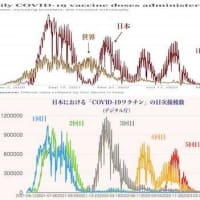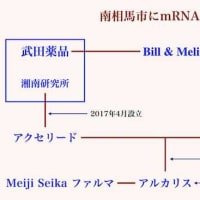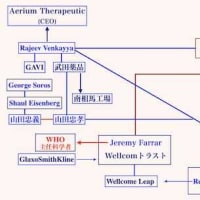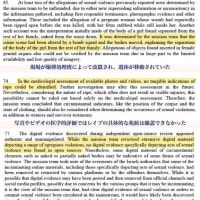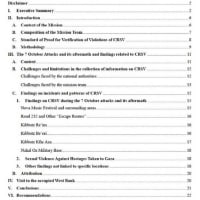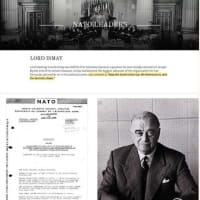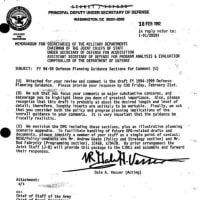文は、主に下記の英文記事を訳していますが、誤訳等多々あると思います。了承ください。
2014年7月当時の記事ですが、現在は双方ともかなり技術の進歩があると予想されます。
USNI・NEWS・Chinese and Russian Radars On Track To See Through U.S. Stealth、By: Dave Majumdar (July 29, 2014)
防衛省は現在、レーダーで捉えにくいステルス性能を持つ最新鋭戦闘機を探知するレーダーの研究開発を行っています。中国等がステルス性能に優れた戦闘機の開発を進めていることを踏まえ、日本の防空態勢を強化する必要があると判断、10年後の実用化を目指していると言われています。
世界で始めてのステルス機撃墜と言うと、1999年3月27日にセルビアの首都ベオグラード近郊上空で米空軍第49戦闘 航空団に所属するF-117機で、セルビア軍のSAM(地対空ミサイル)により、当時最新鋭のF-117ステルス戦闘爆撃機が撃墜されたと言われていますが、低周波数レーダー使用のSAM器材だと言われています。以後、低周波数レーダーの研究が、特に中国、ロシア等で開始されたと言われています。
レーダー周波数帯を、探知する機体の長さに近い低周波帯を用いると、ステルス機に当たる電波の波長が機体のサイズに近いと共振が発生、レーダーに映る面積が大きくなると言われています。この原理を用いたのが低周波レーダーで、ノイズ、クラッター等を拾う等、精度は悪いものの、今後コンピューターの性能向上でこれらの処理は可能と言われています。
電波が遠くまで届くという利点がありますが、用いる波長より短い物体は原理的に発見できないという欠点もあります。中国等の低周波数技術は、相当進んでいると言われています。
USNI・NEWS
Chinese and Russian Radars On Track To See Through U.S. Stealth
米国・ステルス機への、中国・ロシアの対抗手段
By: Dave Majumdar
July 29, 2014
中国等が開発中の新型レーダーは、米国のステルス戦闘機の探知のみならず目標捕捉が容易になると元米海軍高官がUSNI Newsに対し発言しています。
F-22ラプターとF-35ライトニングIIは、高周波数目標照準用レーダー(通常のレーダー)にはステルス性がありますが、低周波数レーダーにはステルス性が発揮できないでしょう。
今までは高周波数帯への対応だけで問題有りませんでした。何故なら低周波レーダーでは兵器の追尾はできないとされてきたからです。
F-22、F-35はKu,X,C BAND、一部Sバンドといった高周波への防御がなされていますが、2機種とも波長が長いL、UHFやVHFを使うレーダーだと容易に発見されます。
中国等の現行低周波数レーダーはステルス機を探知することができますが、正確な位置を割り出して、ミサイル誘導をすることは現在のところ困難だと言われています。
捕捉、火器管制レーダーが周波数帯を変える傾向にあると元米海軍高官がUSNI Newsに説明しています。
コンピューターの更なる性能向上により、低周波数レーダーは目標の識別能力が正確になって来るでしょう。2020年~2030年頃にこの装備が実用化されたらステルス機体の生存性は危うくなるでしょう。
そのため低周波数対策が必要だと専門家は指摘しています。
一部の建造中の中国等の艦艇には高周波、低周波数の双方のレーダーが装備されているとも指摘しています。中国のTYP・52C旅洋IILuyang II、TYP・52D旅洋III駆逐艦がその例です。
参考
(人民解放軍海軍の誘導ミサイル駆逐艦タイ52D旅洋IIIの長沙Changshaには米ステルス機を探知可能なレーダー装備が施されているといわれています。)
NIFC-CA海軍火器管制、対空、対応手段はどうか・・・あまり期待できないようです。
参考
(海軍統合火器管制-対空: Naval Integrated Fire Control-Counter Air、 NIFC-CA、ニフカ・・・アメリカ海軍の防空戦コンセプト(概念)で、対空センサ・防空火力を柔軟に統合運用することで防空戦を効率化し、また水平線の向こうにある目標をリモート交戦(EOR)によって撃破することを可能にしています。)
低周波数レーダーが普及すると、F-35Cが生存できるのかと言う深刻な疑問が出てきます。先の専門家は全方位ステルスがネットワーク型対空体制に対しては望ましいと言っています。
中国等がNICA-CAに対抗しサイバー攻撃、電子攻撃を仕掛けるのは確実だと言われています。
NICA-CAの基盤はデータリンクです。データリンクが厳しい環境の下で作動するか疑問です。ジャミング(妨害)が大量に発生した場合は厳しいでしょう。
敵になる可能性のある中国等は、長距離放射線追尾型ミサイルを開発中です。NIFC-CAの中枢部分となるグラマンE-2D高性能ホークアイが目標となる可能性が高いようです。
放射線追尾型兵器がパッシブ(受動的)動作で長距離射程なら、NIFC-CA構想では対応が難しくなるでしょう。
空母に、全方位ステルス性能を有する機材が配備されないことで高性能版のUCLASS(艦載無人偵察攻撃機)で敵の防空網に対処すべきとの主張が勢いがますことになりそうです。この機能がないままだと海軍の空母航空戦力は実効力を失うと専門家は見ています。
USNI・NEWS
Chinese and Russian Radars On Track To See Through U.S. Stealth
By: Dave Majumdar
July 29, 2014
An F-35B Lightning II aircraft takes off from the amphibious assault ship USS Wasp (LHD-1) in 2013. A former senior Navy official told USNI News its stealth protection could be pierced by new Chinese and Russian radars. US Navy Photo
A growing trend in Russian and Chinese radar could make U.S. stealth fighters easier to see and — more importantly — easier to target for potential adversaries, a former senior U.S. Navy official told USNI News.
U.S. fighters — like the Lockheed Martin F-22 Raptor and F-35 Lighting II Joint Strike Fighter (JSF) — are protected by stealth technology optimized for higher frequency targeting radars but not for lower frequency radars.
Until now a focus on higher frequencies have not been a problem because low frequency radars have traditionally been unable to generate “weapons quality tracks.”
JSF and the F-22 are protected from higher frequencies in the Ku, X, C and parts of the S bands. But both jets can be seen on enemy radars operating in the longer wavelengths like L, UHF and VHF.
In other words, Russian and Chinese radars can generally detect a stealth aircraft but not clearly enough to give an accurate location to a missile
But that is starting to change.
“Acquisition and fire control radars are starting to creep down the frequency spectrum,” a former senior U.S. Navy official told USNI News on Monday.
With improved computing power, low frequency radars are getting better and better at discerning targets more precisely.
“I don’t see how you long survive in the world of 2020 or 2030 when dealing with these systems if you don’t have the lower frequency coverage,” the former official said.
Further, new foreign rival warships are increasingly being built with both high and low frequency radars.
“Prospective adversaries are putting low frequency radars on their surface combatants along with the higher frequency systems,” the former official said.
Chinese warships like the Type 52C Luyang II and Type 52D Luyang III have both high and low frequency radars, the former official said.
The first of the People’s Army Liberation Navy Type 052D Luyang III destroyer. PLAN Photo
“If you don’t have the signature appropriate to that [radar], you’re not going to be very survivable,” he said.
“The lower frequency radars can cue the higher frequency radars and now you’re going to get wacked.”
Nor will the Navy’s vaunted Naval Integrated Fire Control-Counter Air (NIFC-CA) do much to help the situation. Firstly, given the proliferation of low frequency radars, there are serious questions about the ability of the F-35C’s survivability against the toughest of air defenses, the former official said.
“All-aspect is highly desirable against this sort of networked [anti-air] environment,” he said.
Secondly, the Chinese and Russians are almost certain to use cyber and electronic attack capabilities to disrupt NIFC-CA, which is almost totally reliant on data links.
“I question how well all these data links are going to work in a heavily contested [radio frequency] environment where you have lots and lots of jamming going on,” the former official said.
Moreover, in certain parts of the world potential adversaries —China and Russia— are developing long-range anti-radiation missiles that could target the central node of the NIFC-CA network—the Northrop Grumman E-2D Advanced Hawkeye.
“I think the anti-radiation homing weapons that are passive and go long-range are very, very difficult for the NIFC-CA concept to contend with,” the former official said.
Fundamentally, the Navy’s lack of an all-aspect broadband stealth jet on the carrier flight deck is giving fuel to advocates of a high-end Unmanned Carrier Launched Airborne Surveillance and Strike (UCLASS) aircraft that can tackle the toughest enemy air defenses.
Without such capability, the Navy’s carrier fleet will fade into irrelevance, the former official said.











